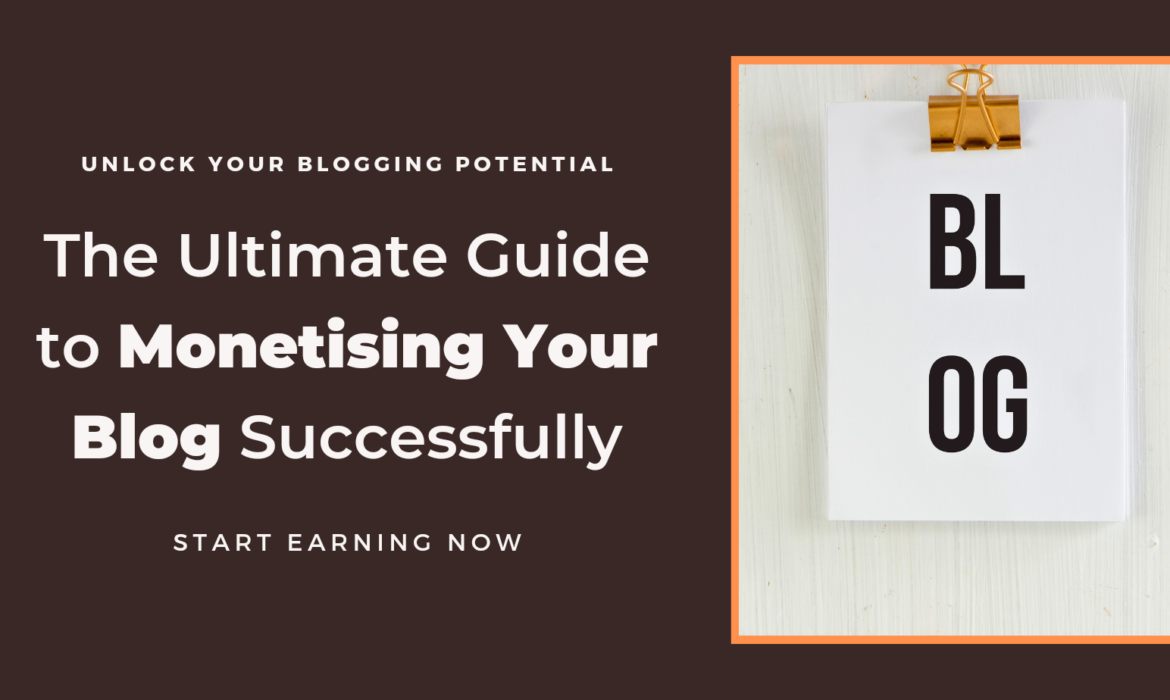081-4797-7173
Blogging has become more than just a hobby for many people; most bloggers monetise their blogs and earn legitimate income. Whether you’re an established blogger or a beginner, monetising your blog can open doors to financial freedom. However, to make money from blogging, it’s essential to choose the right monetisation strategies that align with your blog’s niche, audience, and goals.
In this guide, we’ll explore different methods to monetise your blog, from ads to affiliate marketing, and how to make the most out of each strategy. By the end of this article, you’ll have a clear understanding of how to turn your passion for blogging into a profitable business.
Understanding Your Audience and Niche
Before diving into monetisation methods, it’s important to understand your audience and niche. The key to successful blog monetisation lies in offering valuable content that resonates with your readers. You must know their pain points, interests, and preferences to provide solutions that align with your blog’s purpose.
For example, if your blog focuses on personal finance, your audience will likely be interested in saving tips, investing strategies, and financial products. Knowing this helps tailor your monetisation strategies to offer products or services that meet their needs, increasing the chances of making sales or generating clicks.
Setting Up for Monetisation
Before starting monetisation, it’s essential to set your blog up for success. A professional-looking blog with great content is just the beginning. To monetise effectively, you need to focus on a few crucial aspects:
- Audience Building: Your blog needs a steady stream of visitors. To build this, use SEO, social media marketing, and content marketing to drive traffic.
- User Experience: A blog that is easy to navigate, loads fast, and mobile-friendly will ensure visitors stick around longer. This can translate into more opportunities for monetisation.
- Niche Focus: Having a clear niche will make it easier to attract a targeted audience, which is essential for certain monetisation methods like affiliate marketing.
In addition, ensure you have basic monetisation tools in place, such as integrating an email list for future marketing efforts and setting up Google Analytics to track your blog’s performance. With the right foundation, monetising your blog becomes a more streamlined process.
Affiliate Marketing
Affiliate marketing is one of the most popular and effective ways to monetise your blog. It involves promoting third-party products or services and earning a commission for every sale made through your referral links.
To get started with affiliate marketing, you need to sign up for affiliate programs related to your niche. Platforms like Amazon Associates, ShareASale, and Rakuten offer a wide range of affiliate programs to choose from. Once you’re enrolled, you can integrate affiliate links into your content, such as blog posts, reviews, or product roundups.
The key to successful affiliate marketing is recommending products that genuinely align with your audience’s needs and interests. If you’re blogging about tech gadgets, for instance, you could recommend affiliate links to the latest tech products. This adds value to your content while generating income.
Furthermore, be transparent with your audience. Clearly disclose your affiliate partnerships to build trust and maintain credibility. This can be done by adding a simple disclaimer or a short note within the post to let readers know that you may earn a commission if they purchase through the links.
Selling Digital Products
Another excellent way to monetise your blog is by selling digital products. These products can be anything from e-books and online courses to digital downloads such as printables, templates, or stock photos. Digital products offer high profit margins because they have no physical inventory or shipping costs, making them a cost-effective choice for bloggers.
When creating digital products, focus on solving a problem or fulfilling a need for your audience. For example, if you run a food blog, you could create a recipe e-book or meal plan guides. Alternatively, if your blog covers personal finance, consider offering budgeting templates or financial planning worksheets.
The key to success with digital products is creating valuable content that resonates with your readers. Ensure that your digital products offer real value that can improve the lives of your audience, whether it’s through education, entertainment, or practical tools.
To effectively promote these products, feature them prominently on your blog, perhaps in a dedicated shop or product section. You can also use pop-ups, banners, or email marketing campaigns to boost sales. Lastly, don’t forget to leverage social media platforms to showcase your products and attract potential buyers.
Offering Memberships or Subscriptions
Creating a membership program or subscription service is another excellent way to monetise your blog. This strategy works best when you have built a loyal, engaged audience who values your content. By offering exclusive content or perks to your subscribers, you can generate recurring revenue while also fostering a closer connection with your audience.
For example, you could offer premium blog posts, access to a private community, downloadable resources, or even personalised consultations. Members could pay a monthly or yearly fee to access these benefits. A subscription model provides predictable and steady income, which is a significant advantage for any blogger.
When implementing a membership model, it’s crucial to ensure that the content or benefits you provide are worth the price. Offer real value that makes readers feel they are getting more than they would from free content. Be sure to market your membership offering regularly through blog posts, email newsletters, and social media to attract new members.
Diversifying Income Streams
Once you’ve mastered one form of monetisation, it’s time to think about diversifying your income streams. This not only maximises your earning potential but also helps reduce reliance on a single source of income. Here are some ways to diversify:
- Affiliate Marketing: Once you’ve built trust with your audience, adding more affiliate partnerships can bring in a steady stream of income. You can promote products or services that align with your niche and audience’s interests.
- Digital Products: Creating and selling your own digital products, like eBooks, courses, or printables, allows you to tap into a different revenue stream. With your own products, you have complete control over pricing and profit margins.
- Ad Networks: As your blog traffic grows, you can join ad networks like Google AdSense or Mediavine. This provides passive income from ads displayed on your blog.
- Memberships or Subscriptions: For blogs with exclusive, high-quality content, offering a membership or subscription model can be a reliable income source.
- Sponsored Posts: As your blog becomes more recognised, companies may approach you to publish sponsored content. This is a great way to generate income while providing value to your readers.
By combining several monetisation methods, you ensure a more stable and growing revenue stream, even if one method slows down.
Conclusion
In conclusion, to monetise your blog is an exciting journey, but it requires strategy, patience, and the right tools. From affiliate marketing and sponsored posts to selling your own products, the opportunities are endless. Remember that the foundation of any successful blog monetisation plan lies in creating high-quality content, understanding your audience, and continuously improving your blog’s performance.
As you grow your blog, diversifying your income streams will ensure that you’re not relying on just one source of revenue. This way, you’ll maintain a steady income even as you explore new monetisation methods. Do you have any monetisation tips that worked well for your blog? Share your thoughts and experiences in the comments below – we’d love to hear from you.
0






